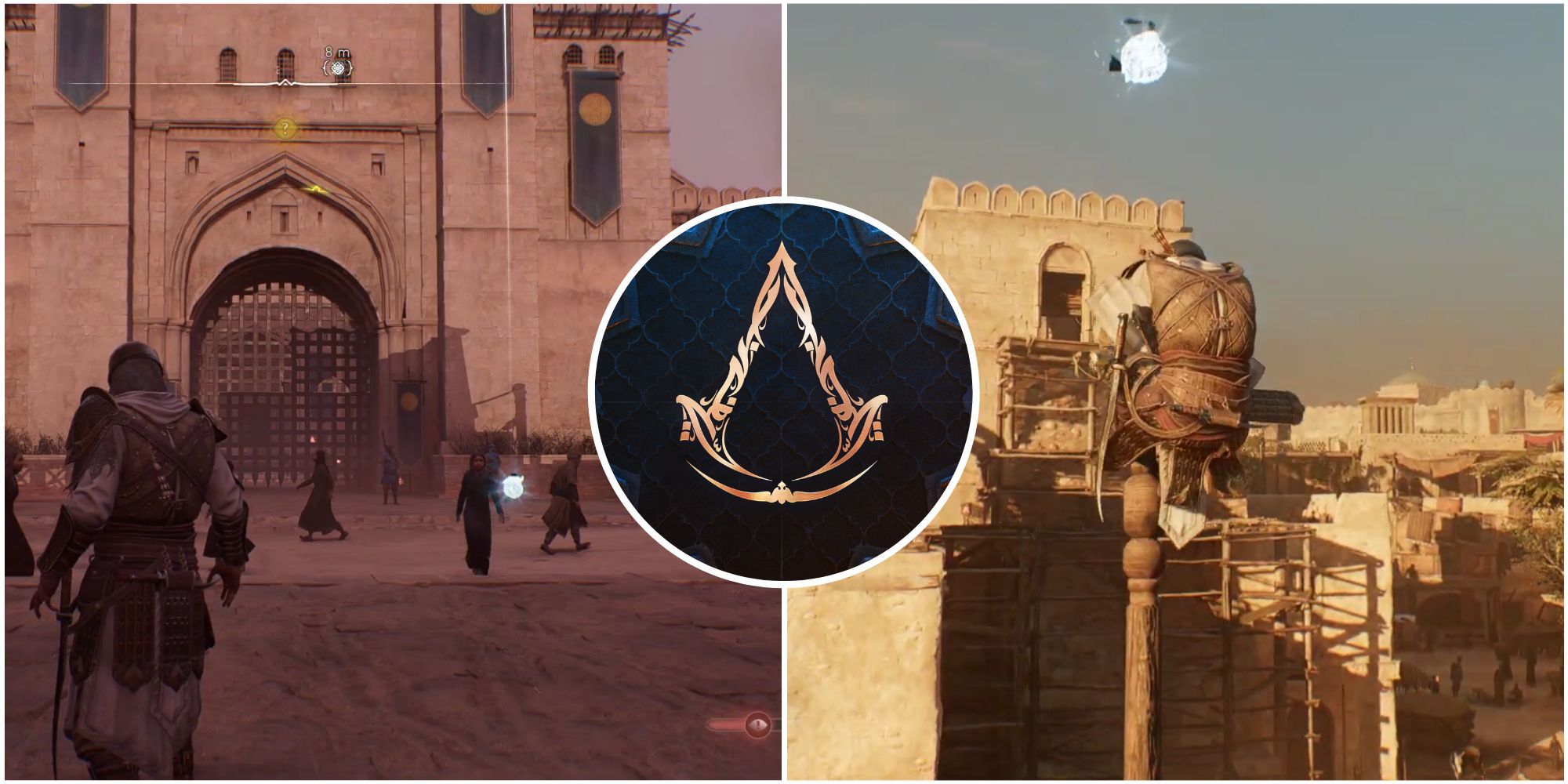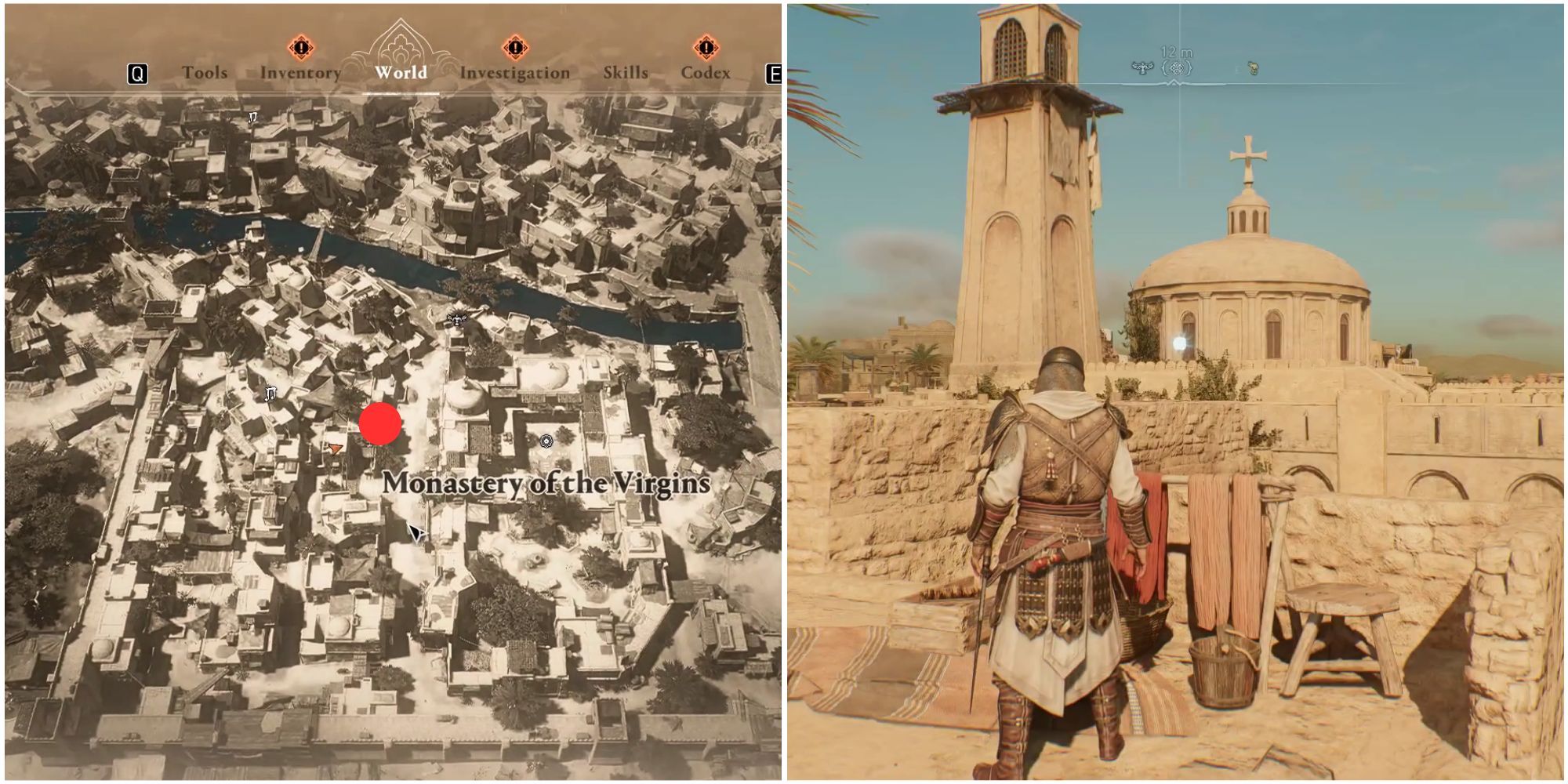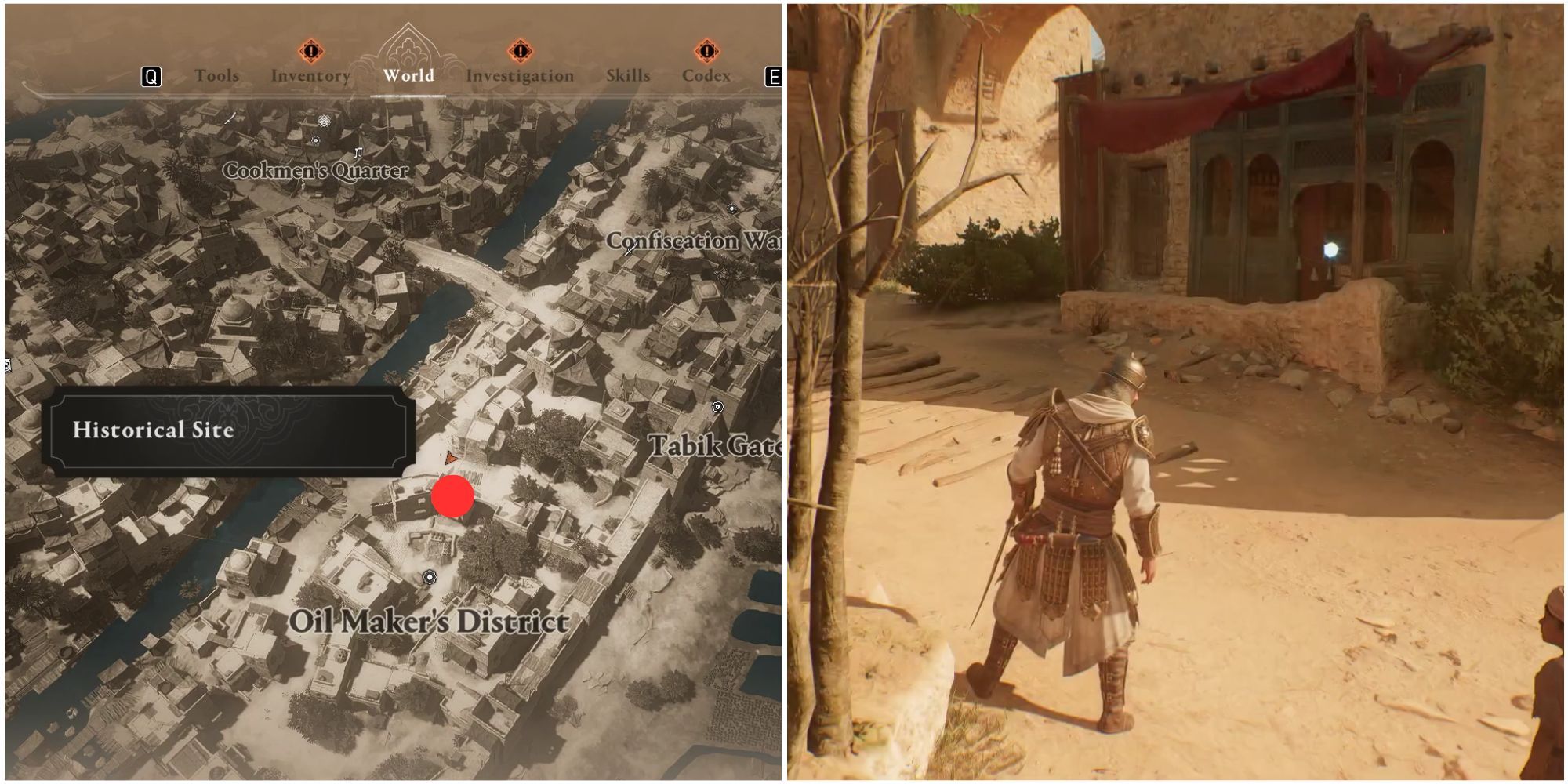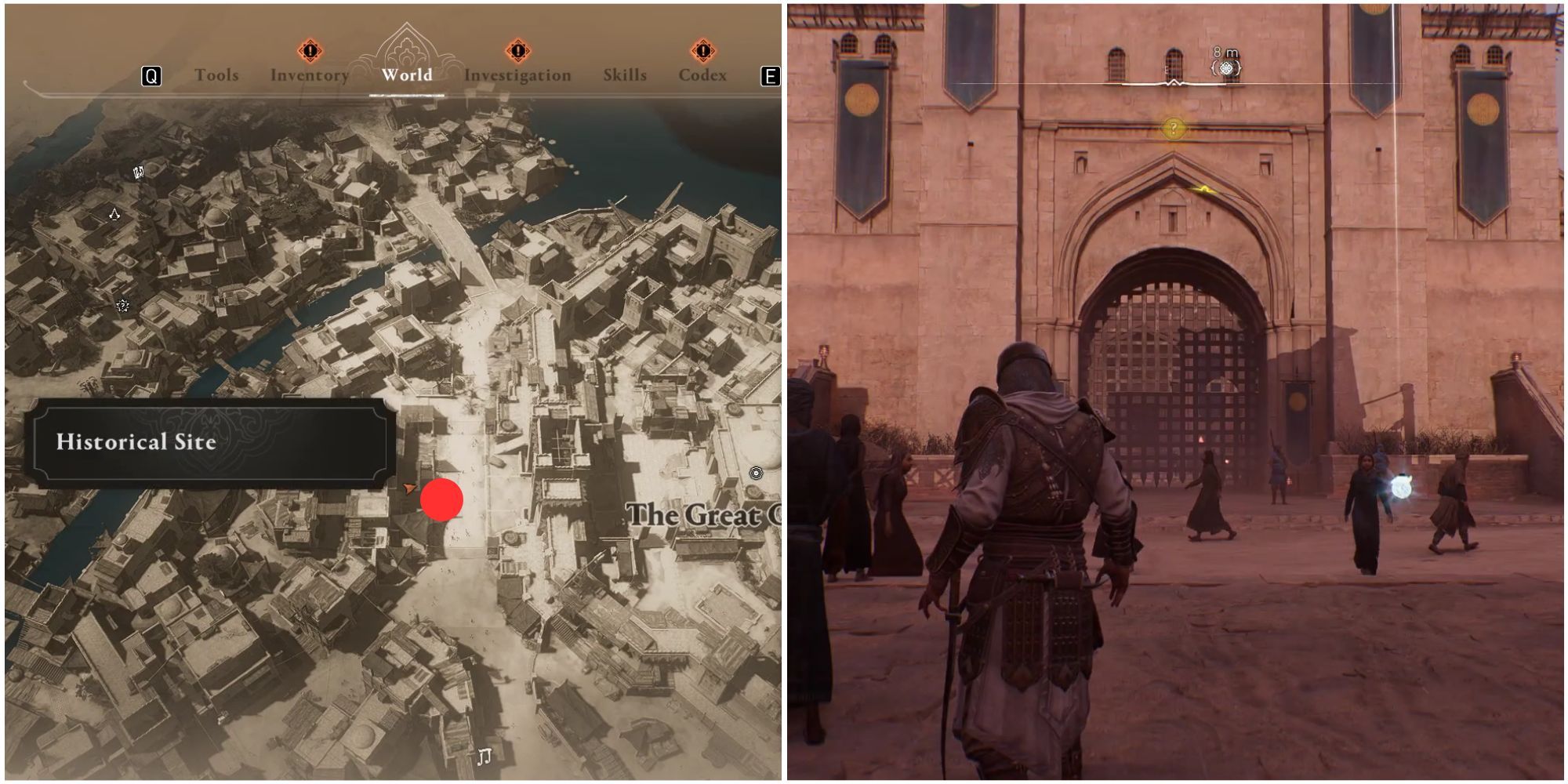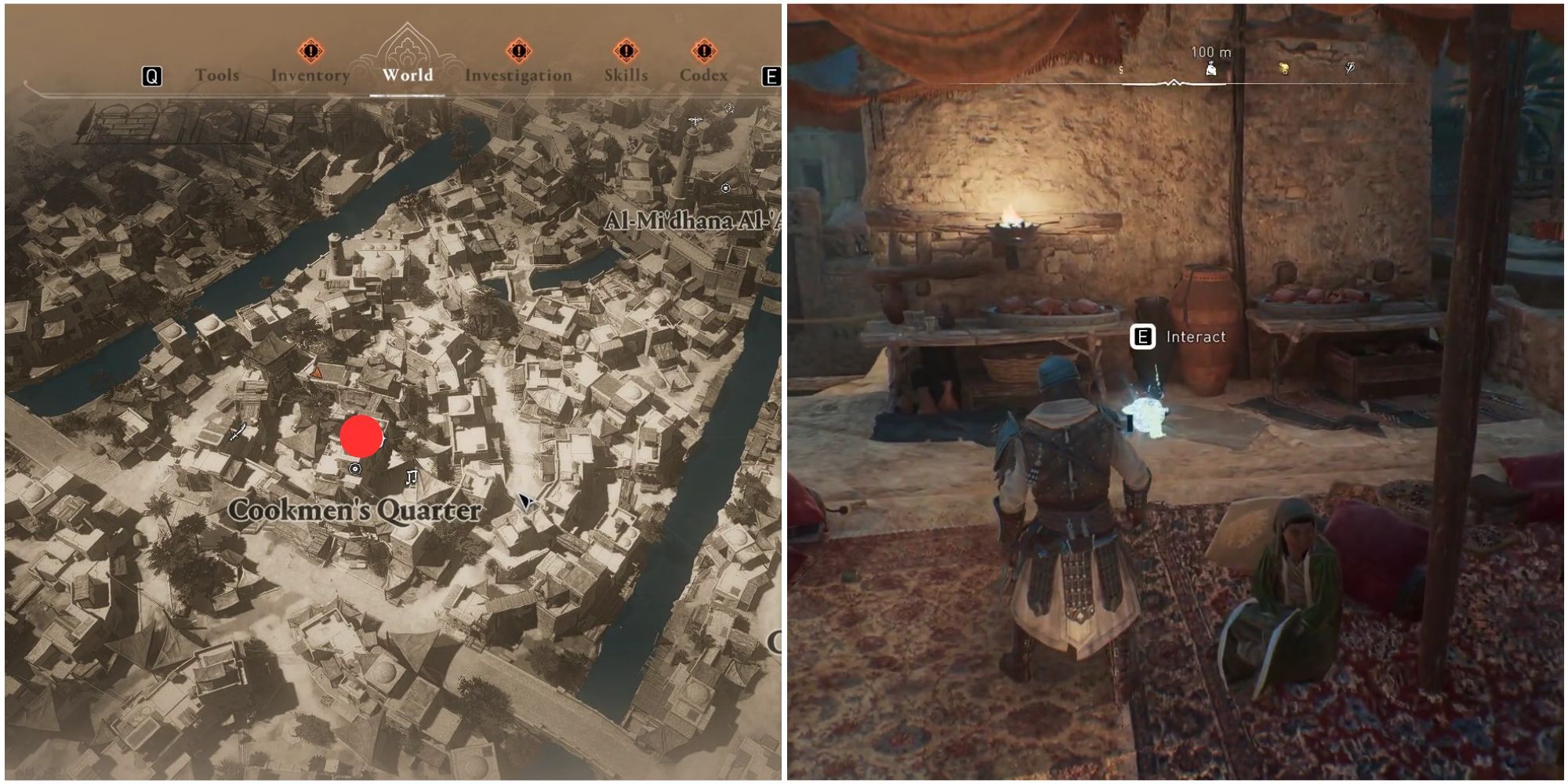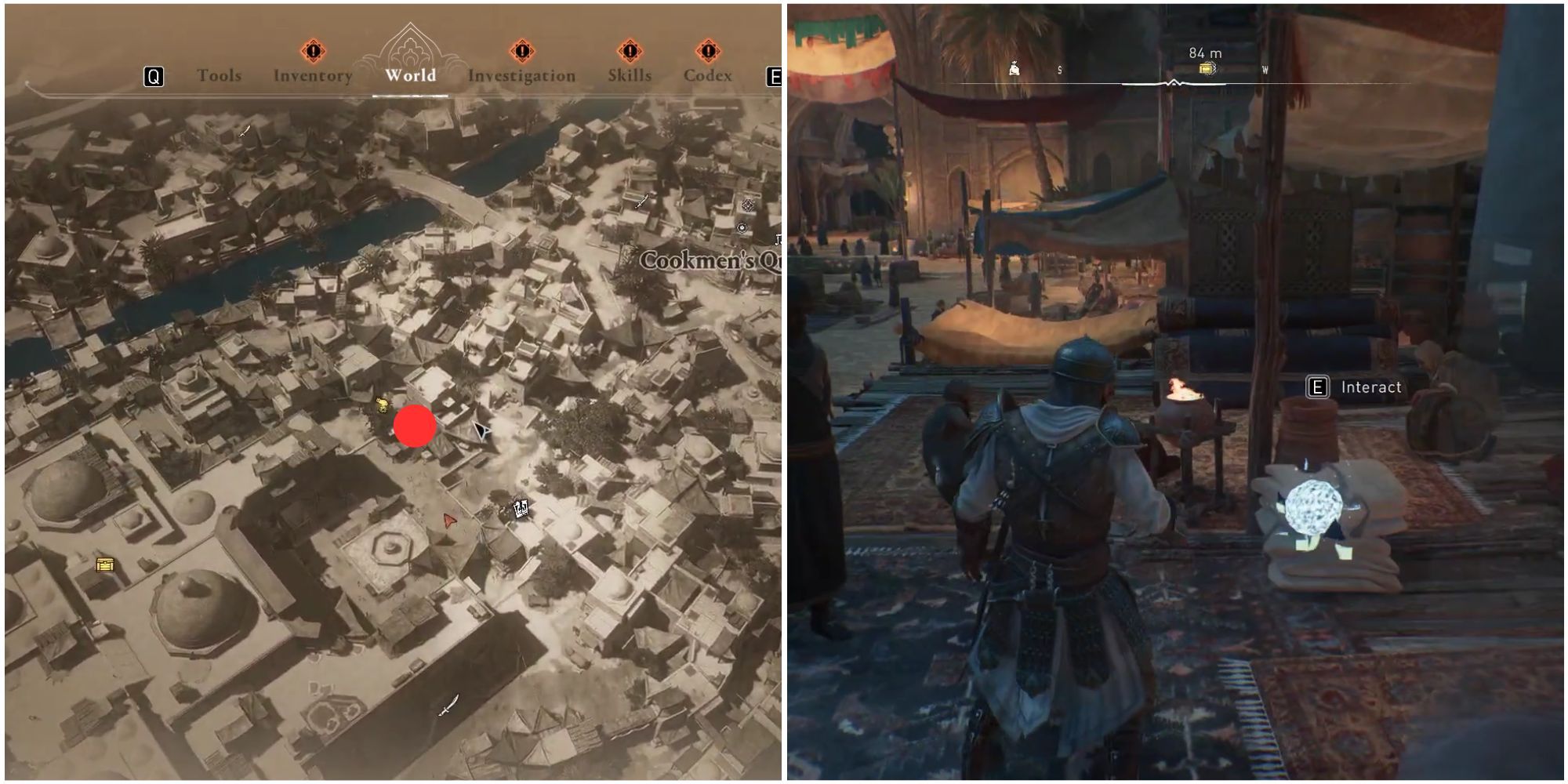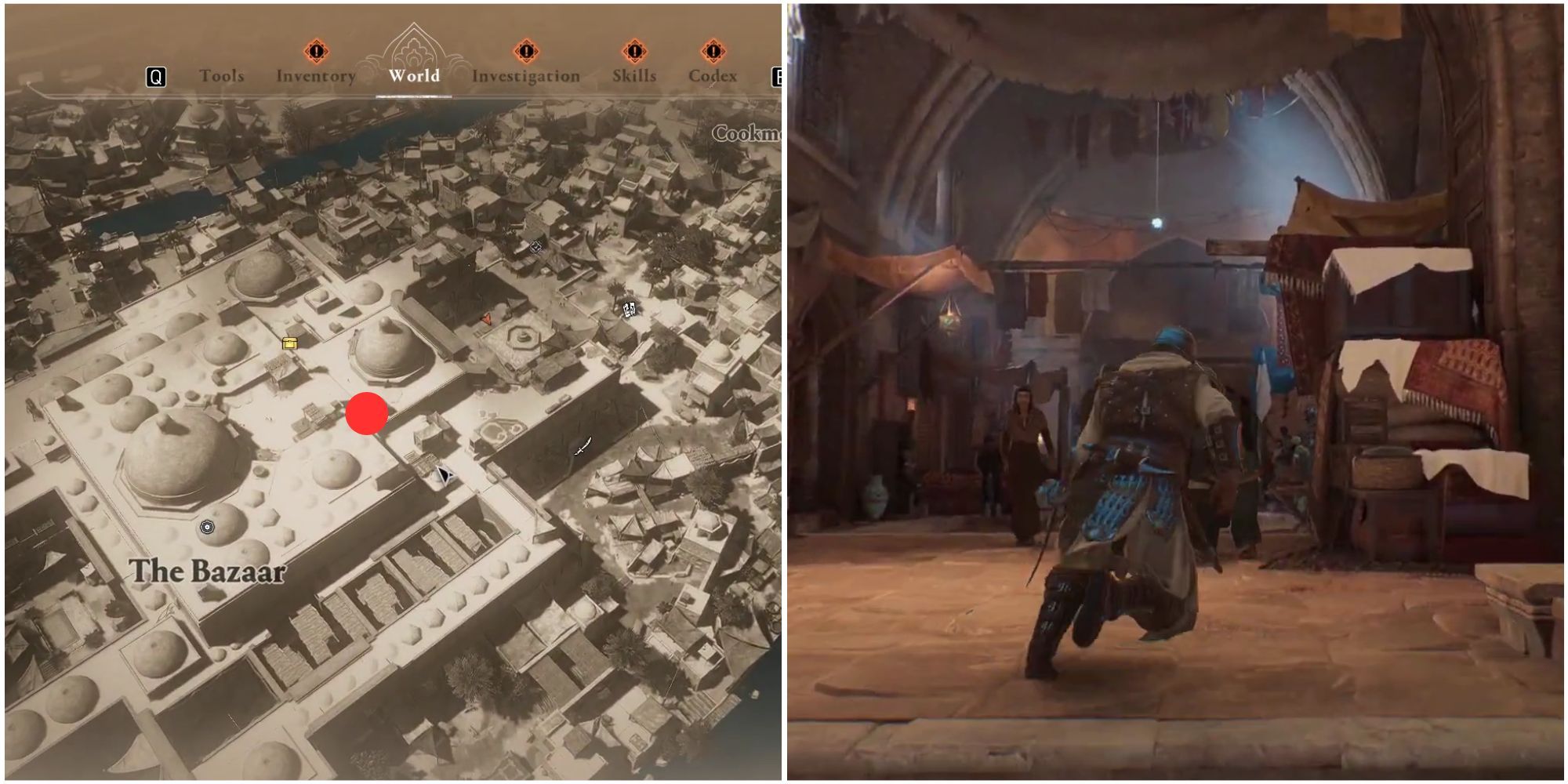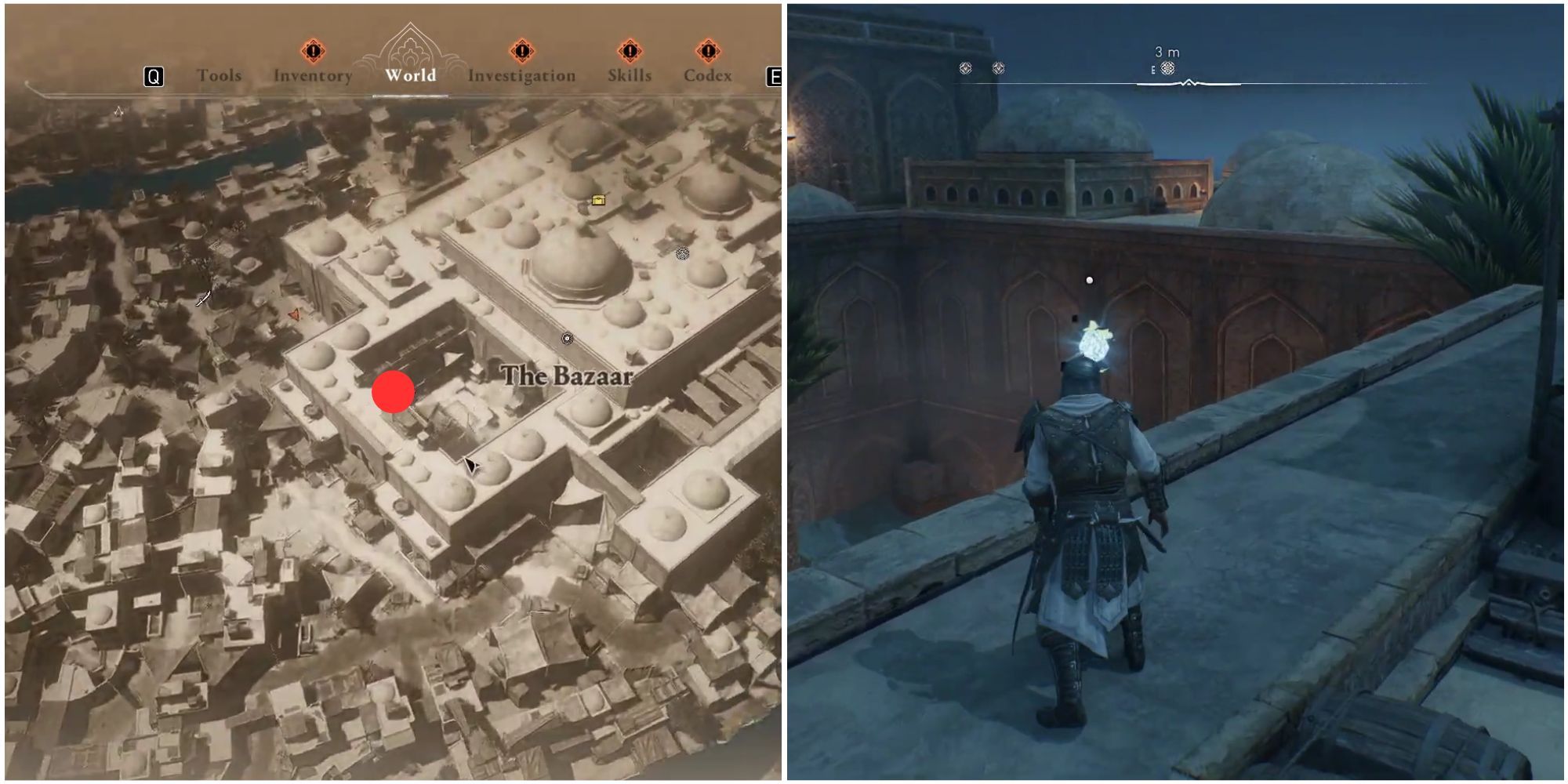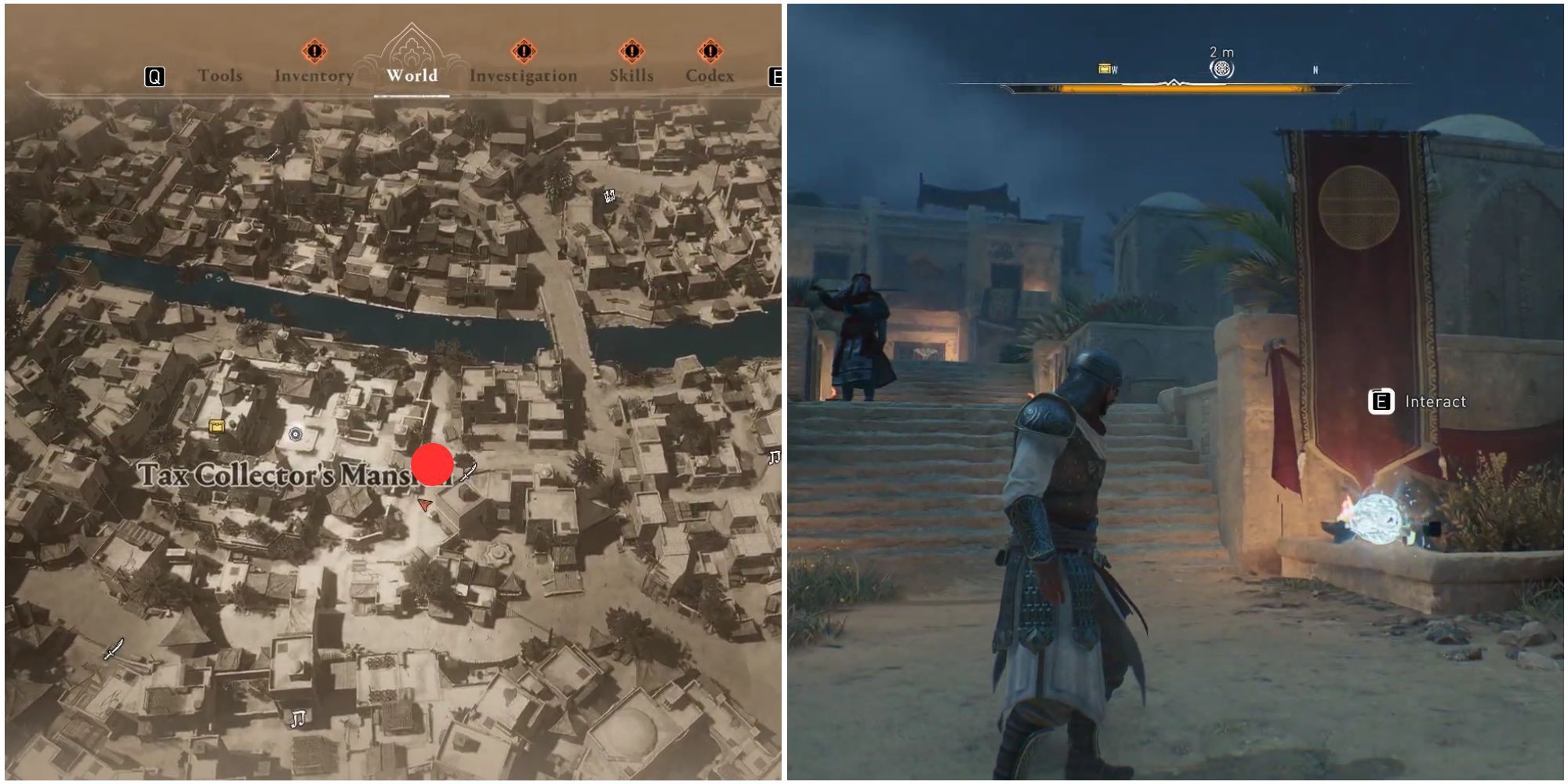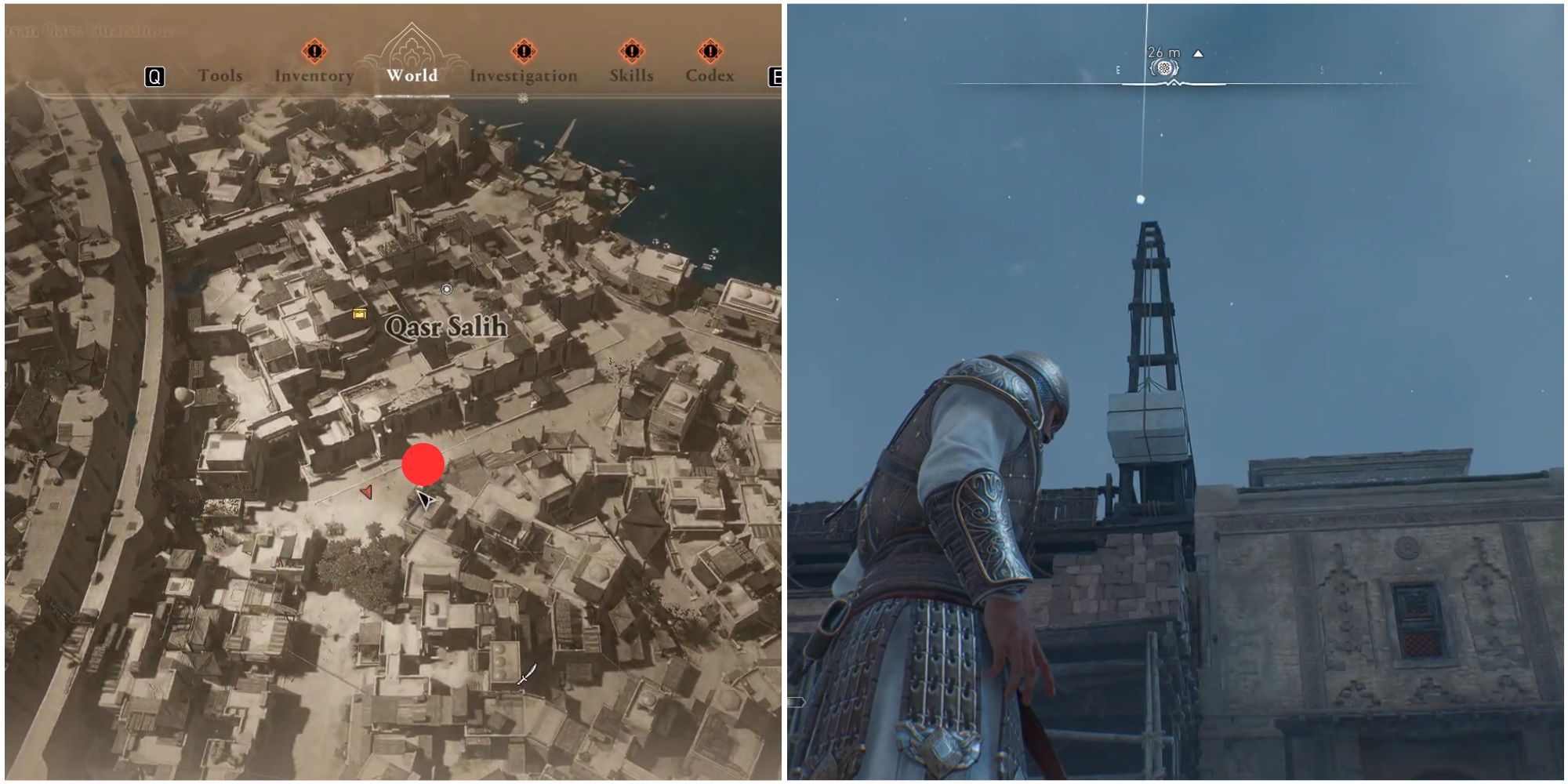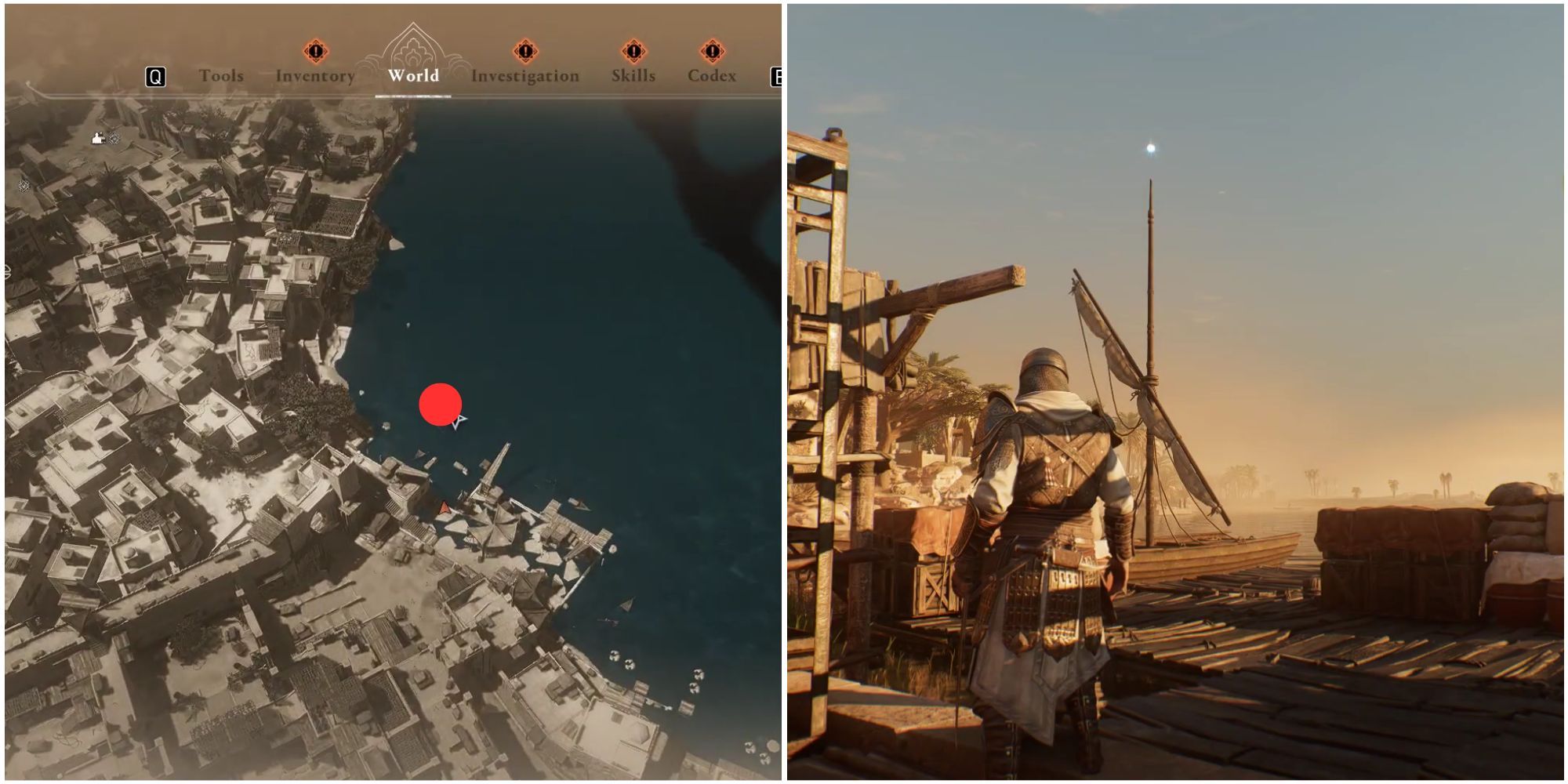Set in the Abbasid-era Baghdad, Assassin’s Creed: Mirage does its best to narrate a separate story of ancient Baghdad through the many historical sites scattered across the city. These sites are special places in the game that are a true reflection of the places that actually existed or continue to exist in today’s Baghdad.
The city of Baghdad is divided into multiple districts, with each district offering a specific number of historical sites to visit. The Karkh district includes 11 historical sites, and completing all of them requires interacting with a specific orb. If you’re trying to discover and complete all historical sites in Karkh, this guide has you covered.
Historical Site 1 – Dhimmi (Non-Muslims)
The Monastery of Virgins, also called Dhimmi, is a historical site located southeast of Karkh. It’s almost at the edge of the district border where Karkh separates from Abbasiyah. The monastery also includes a synchronization point. Dhimmi is a historical Arab term used to describe people, typically non-Muslims, protected by Islamic law. Dhimmis were generally Christians and Jews who were offered the liberty to practice their own religion, engage in trade, and own property. However, Dhimmis were also required to pay a special tax called Jizya.
The historical site orb is located on a ledge east of the monastery. Refer to the image above to find the exact location of the orb.
Historical Site 2 – Perfumes
The Perfumes historical site is located in the southern region of the Karkh district, bordering the wilderness. The historical orb can be found in front of a red perfume shack. Perfume production and trade was an important aspect of ancient Baghdad commerce, which is true even to this day.
While this historical site is easy to locate, if you’re having trouble finding it, refer to the image above for the exact location.
Historical Site 3 – Abbasid Army
The Abbasid Army historical site is located in front of the Great Garrison, southeast of Karkh, in Sharqiyah. The Abbasid Caliphate was regarded as one of the powerful caliphates in ancient Baghdad, who stretched his rule from 750 to 1258 AD. The purpose of the Abbasid Army was to defend and expand Abbasid’s territory and to maintain the law of the land.
The historical orb can be found on the main road, right in front of the garrison main entrance.
Historical Site 4 – Table Manners
The Table Manners historical site is located in the central region of Karkh, in Tabik. If you zoom in the map, you’ll notice a region called Cookmen’s Quarter. The historical site orb is located on the roof of the Cookmen’s Quarter.
In ancient Baghdad, sharing food and drinks with guests were a sign of good table manners and generosity. Refer to the image above to easily locate the historical site.
Historical Site 5 – Textiles
The Textiles historical site is located near the Bazaar in the central region of Karkh. Northeast of the Bazaar entrance, you can find the historical orb on a platform where NPCs are selling textiles. Textiles played a major role in the trade and commerce of ancient Baghdad. The people of ancient Baghdad used a variety of textile items like silk, cotton, and wool to produce items like clothing and rugs.
The craft of textile manufacturing also saw the emergence of artisans, who imbued aesthetics into their skill, resulting in iconic Persian designs, patterns, and calligraphy.
Historical Site 6 – The Bazaar
The Great Bazaar is a prominent landmark in Baghdad. The location is primarily known for being a large hub of markets where people meet each other to socialize, buy daily food items, and purchase other important household materials.
The Bazaar historical site is easy to find; it’s located in the central region of Karkh. The corresponding historical site orb is placed on a beam near the main entrance of the Bazaar.
Historical Site 7 – Center Of The World
The Center of the World historical site is located east of the Bazaar in the central region of Karkh. The historical site orb can be collected atop the Bazaar. You’ll need to parkour your way up to top of the Bazaar from the outside walls to reach the orb.
When Baghdad was founded in the 8th century, it was regarded as one of the most influential cities in the world, often known for its major cultural, intellectual, and economic hub.
Historical Site 8 – Taxes
The Taxes historical site is located in the western region of Karkh, in front of the Tax Collection’s Mansion. The mansion can be found near the border of Karkh and Abbasiyah. Ensure that your notoriety level is low when approaching the mansion, as it is guarded by some tough enemies.
A variety of taxes were levied from the residents of ancient Baghdad, which were used by the caliphate in the maintenance of the infrastructure, military, and public services.
Historical Site 9 – The Abbasids And Their Rivals
The Abbasids and their Rivals historical site is located in the northeastern region of Karkh, in Sharqiyah. The historical orb can be collected by scaling a rock pulley-like structure.
In Medieval Baghdad, the Abbasids had many rivals that the caliphate was defending their territory against, including Umayyads, Shi’a Uprisings, Buyids, Seljuks, and Mongol invasions.
Historical Site 10 – Ghilman (Servant Soldiers)
Ghilman, also called Ghulam, were enslaved soldiers who served as personal guards, palace attendants, and even as military forces. Ghilman were part of the social and political structure of ancient Baghdad.
The corresponding historical site can be found in the northeast region of Karkh in Sharqiyah, south of Qasr Salih. The historical site orb can be collected from the roof of a house.
Historical Site 11 – Bhaghadi Exports
Baghdad is strategically located alongside the river Tigris. The route that the Baghdadi people took to export spices, goods, textiles, and other valuable items was called the Silk Road.
The final historical site is located in the northwest region of Karkh, west of Qasr Silah, on a ferry sail pole. You’ll need to climb the pole to collect the final historical orb in the Karkh district.
